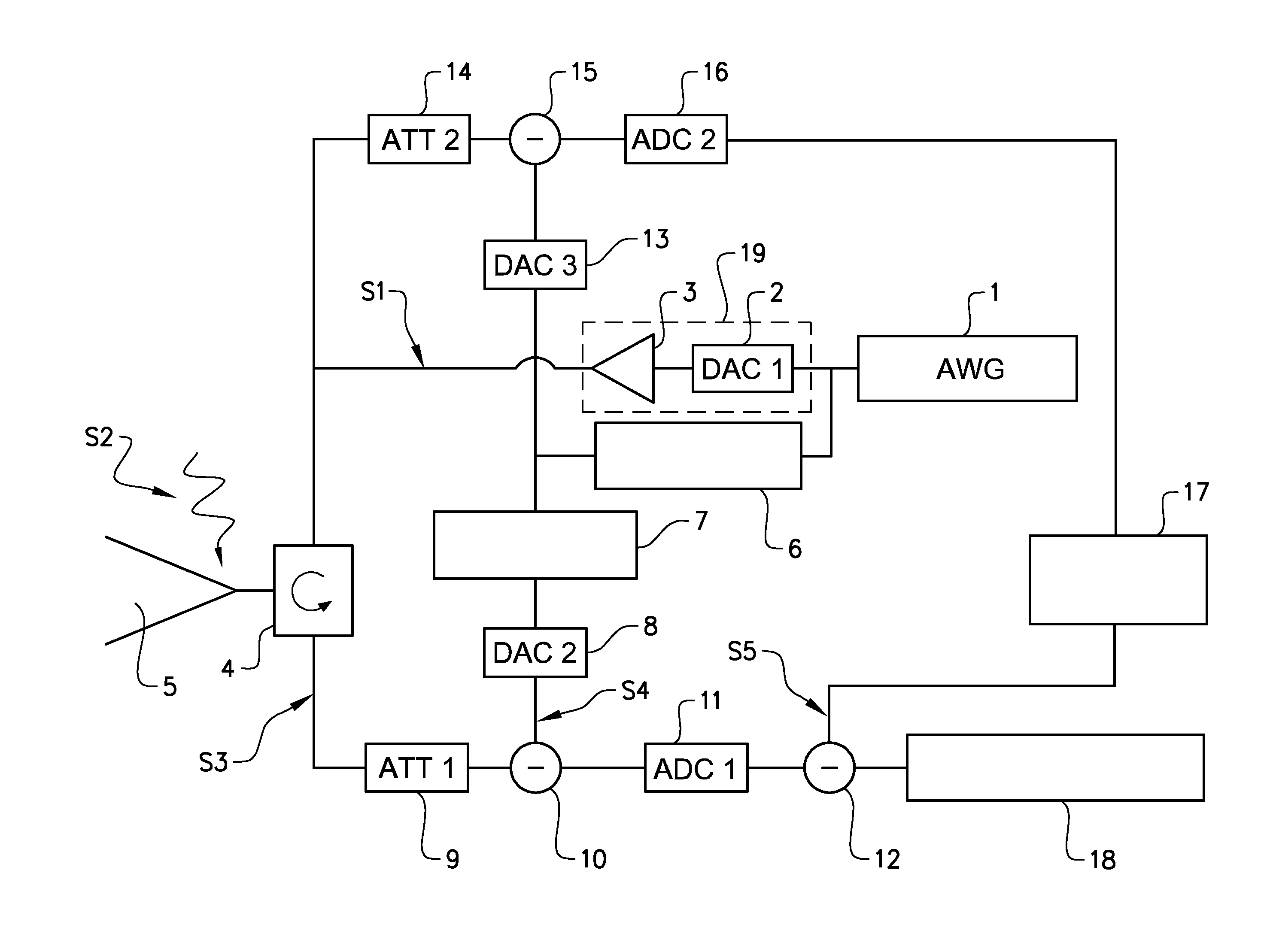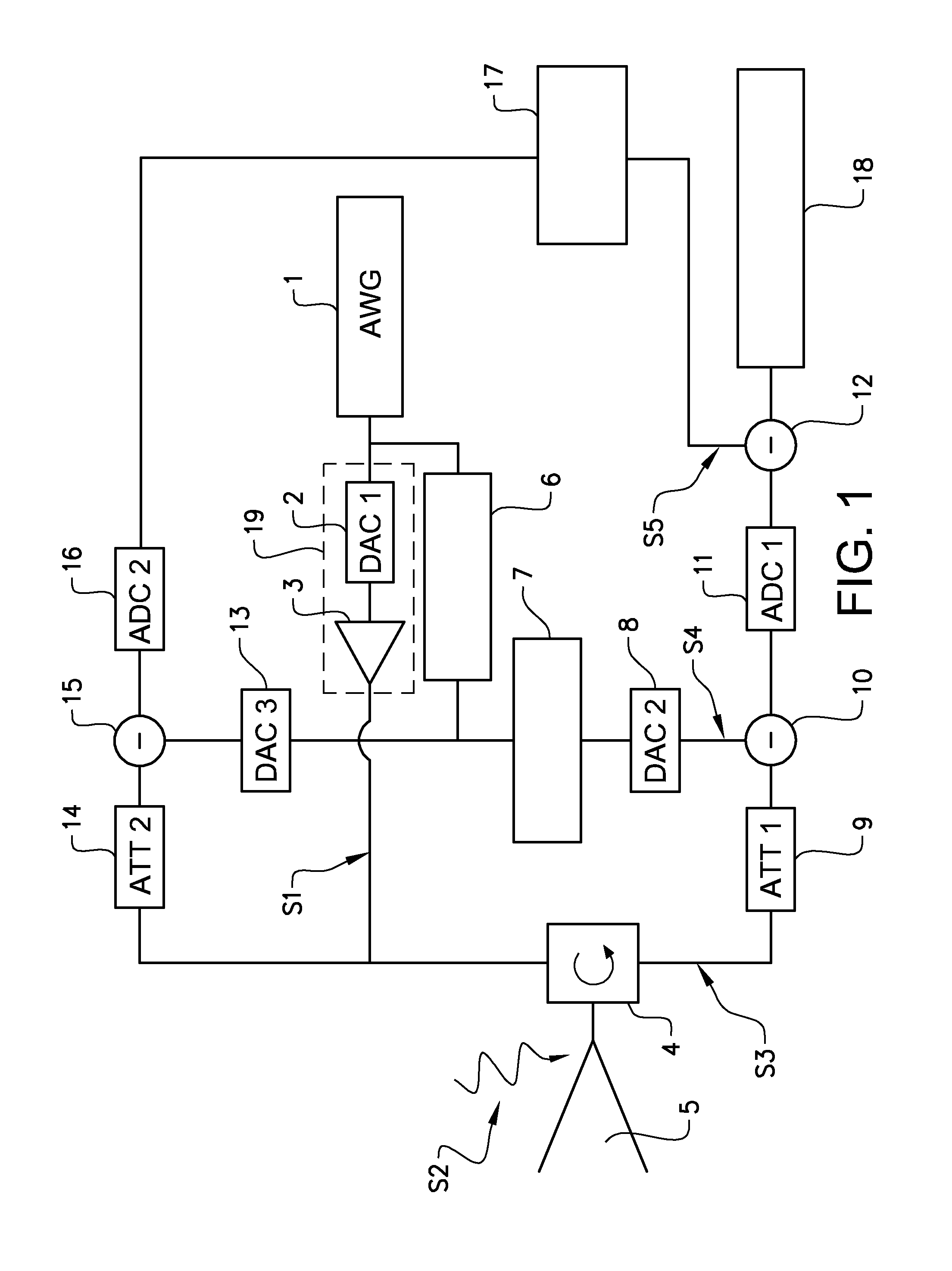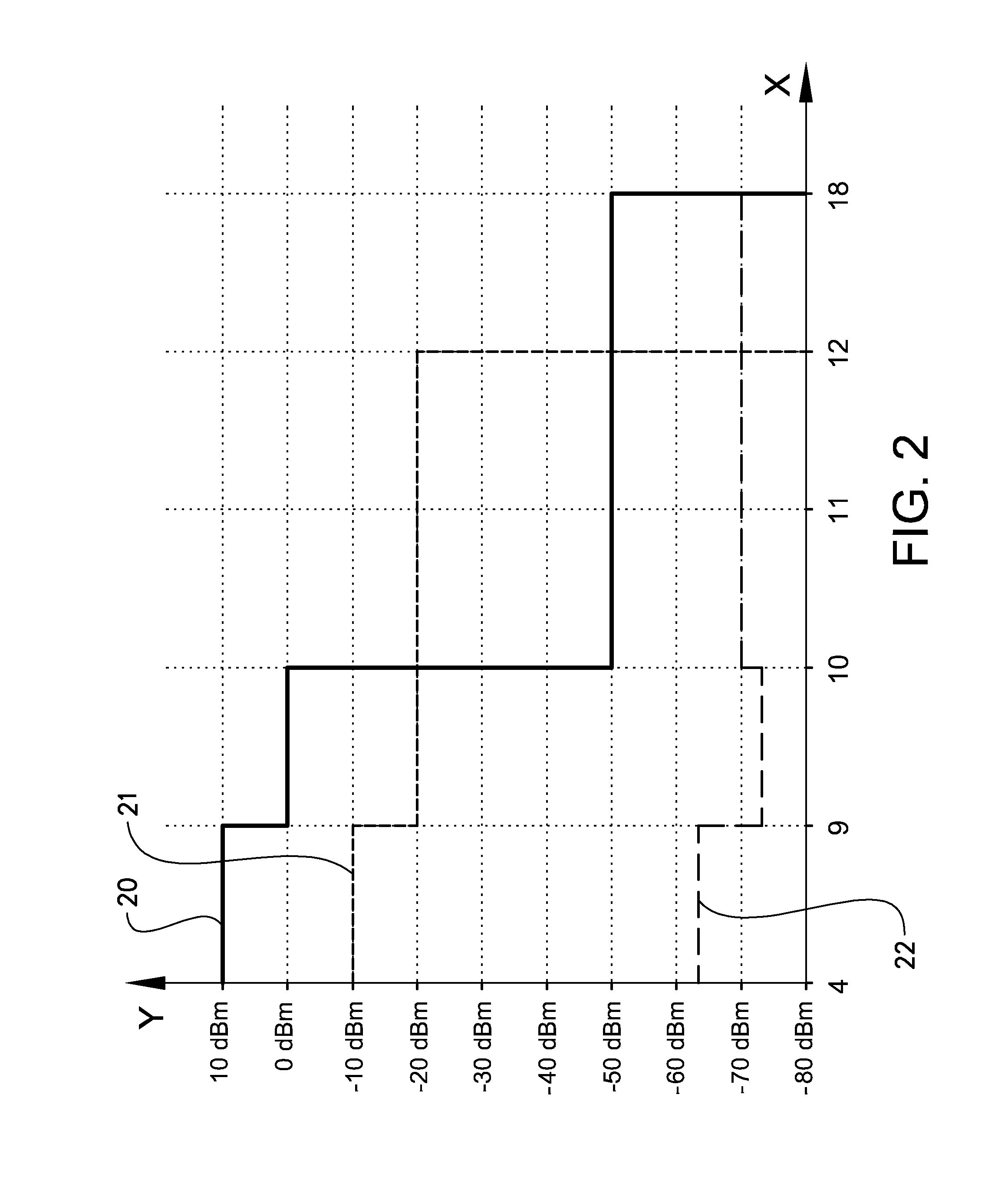Wideband transmitter/receiver arrangement for multifunctional radar and communication
a multi-functional, transmitter-receiver technology, applied in the field of wideband multi-functional transmitter-receiver arrangement, can solve the problems of lack of multi-functional capability, poor signal cohabitation between the environmental signals, and limited function of fmcw radar
- Summary
- Abstract
- Description
- Claims
- Application Information
AI Technical Summary
Benefits of technology
Problems solved by technology
Method used
Image
Examples
Embodiment Construction
[0054]In the following only one embodiment of the invention is shown and described, simply by way of illustration of one mode of carrying out the invention.
[0055]FIG. 1 shows the system building blocks of AWCW radar according to the invention. A digital arbitrary waveform generator AWG 1 feeds a transmitter 19 comprising a first digital to analogue converter DAC 2, and a power amplifier 3. The signal generated by the AWG 1 is thus converted to an analogue signal, which is amplified in the power amplifier 3. The transmitter 19 subsequently feeds a transmitter signal S1 into a RF isolator 4, which serves to control the direction of signal flow. The isolator 4 is further connected to an antenna arrangement 5, and to a receiver, such that signals S1 from the transmitter 19 are routed by means of the isolator 4 to the antenna arrangement 5 and isolated from the receiver, and incident signals S2 on the antenna are routed solely to the receiver. The term isolator (4) is here considered to ...
PUM
 Login to View More
Login to View More Abstract
Description
Claims
Application Information
 Login to View More
Login to View More - R&D
- Intellectual Property
- Life Sciences
- Materials
- Tech Scout
- Unparalleled Data Quality
- Higher Quality Content
- 60% Fewer Hallucinations
Browse by: Latest US Patents, China's latest patents, Technical Efficacy Thesaurus, Application Domain, Technology Topic, Popular Technical Reports.
© 2025 PatSnap. All rights reserved.Legal|Privacy policy|Modern Slavery Act Transparency Statement|Sitemap|About US| Contact US: help@patsnap.com



